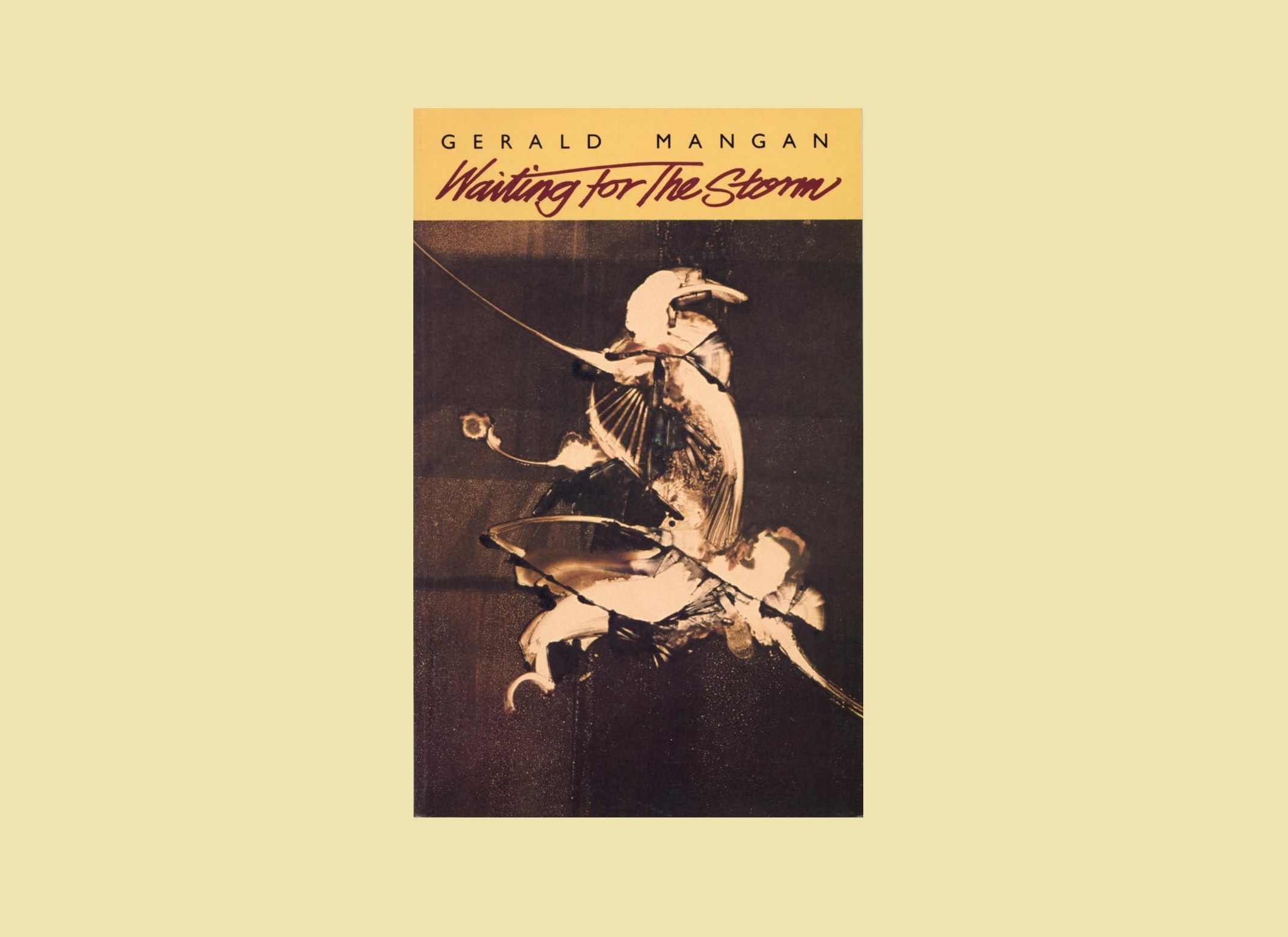Matthew Stewart
How many individuals really do manage to produce outstanding work in more than one medium of the arts? Very, very few is the inevitable answer – but Gerald Mangan might well be one of them.
Mangan, born in Glasgow in 1951, is known not only as a playwright and actor, but is also renowned for his art, especially his portraits and caricatures. In fact, he has work on display at the Scottish National Portrait Gallery, and some of his exceptional drawings of major literary figures – including WS Graham and Hugh MacDiarmid – can be viewed on the gallery’s website here; they are well worth a look.
However, this short essay-cum-review will focus on Mangan’s poetry, revolving around his only full collection, Waiting for the Storm (Bloodaxe Books, 1990). It initially seems improbable to suggest that a poet might build and sustain a significant cult following on the back of a single book published thirty-five years ago and is now out of print, yet Gerald Mangan has managed to do so. Let us look at some of the reasons why.
First of all, there is Mangan’s exquisite ear for the aural patterning of apparently ordinary language, never needing linguistic fireworks to lift it out of prose and into poetry. He has a gift for subtly heightening and tightening everyday turns of phrase, as in the opening lines to ‘The Recluse’:
What is it in the sunlight
of the afternoon, breaking
through the leaves at the window,
that throws me out of true?
And then, in this same stanza, there’s the visual artist’s ability to make a physical scene come alive through the capturing and portrayal of specific details.
Mangan’s language is always natural, never extravagant in its effects, every syntactic choice harnessed to increasing the impact of the poem as a whole. Its flow and cadence are fresh and surprising, but somehow inevitable, just like his similes, a device that he loves to use. Here are a few instances:
…and his face falls like wax on a candle…
(from ‘Glasgow, Underground’)…The hours surge like sleepwalkers
towards a closing departure-gate…
(from ‘Deadlines’)…and the day forms a skin
like milk cooling…
(from ‘Birch Bark’)
In thematic terms, Mangan displays a wide range of concerns in Waiting for the Storm. For instance, he is capable of excavating the intimate and invoking empathy. One supreme example can be found in the opening lines to ‘A Trial Separation’:
Something suspended in the air
afterwards – as if my last word,
stretched out by the silence
like elastic from my mouth,
was set to snap back
in my face…
These lines might be packed with delicious imagery (plus yet another exquisite simile), but they are also underpinned by emotional rigour, generating a poetic truth that draws the reader in. What is more, they also demonstrate a dramatist’s flair for generating the tension of a scene and its aftermath, words and gestures combining to portray a human relationship.
Another key theme throughout Waiting for the Storm is that of nationhood and Scottish identity, often filtered through myth or other media such as film. ‘Gunfight at the Govan Corral’ ends with the following lines:
The hero blows his nails, and strolls
Home for his tea. The credits roll.
The sun sets over the Govan Toll.
The above might appear humorous, and it certainly is – but there are additional layers to be unpeeled. This scene from a Glaswegian Western evokes absurdity so as to break out from the finite, turning the local into the national and, in turn, the universal. There is a great coherence and cohesion to the collection. From the poet’s own illustration on the front cover, to the ringing endorsement from Douglas Dunn on the back (“at times his energy reminds me of MacNeice’s”), everything works in harness, communicating an idiosyncratic, transformative poetic method arriving fully formed.
But thirty-five years have passed since the publication of Waiting for the Storm. Will it remain the sum of Gerald Mangan’s poetic output? Is it sufficient to warrant a major reputation? Is Dunn in his endorsement justified in stating that “quite simply he is one of the best Scottish poets of his generation”?
The best way for any reader to decide would be to get hold of a copy for themselves, but that is a big ask in itself, bearing in mind the book’s lack of availability. Might a New & Selected Poems be a possibility, combining Waiting for the Storm with other, uncollected pieces? Such a volume would surely help solidify Gerald Mangan’s literary reputation, and bring his poetic gifts to a wider contemporary readership – one it richly deserves.
